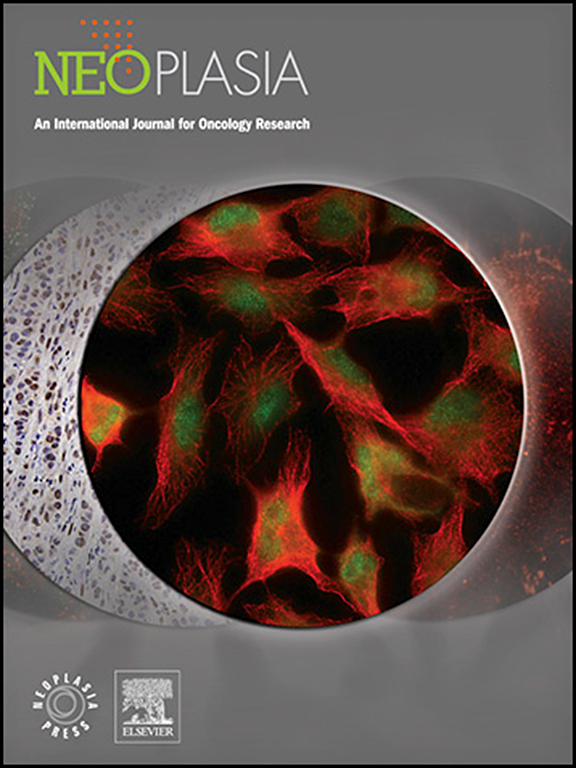ZC3H15 suppression ameliorates bone cancer pain through inhibiting neuronal oxidative stress and microglial inflammation
IF 7.7
2区 医学
Q1 Biochemistry, Genetics and Molecular Biology
引用次数: 0
Abstract
Background
Patients with advanced-stage malignancies often endure unbearable pain, partly due to the incomplete understanding of its molecular mechanisms. Zinc finger CCCH-type containing 15 (ZC3H15) is a highly conserved eukaryotic protein involved in various cellular processes, including tumor growth and inflammation. However, its impact on cancer-induced pain, especially the underlying mechanisms, remains largely unknown.
Methods
To evaluate the expression of ZC3H15 in cancer-induced pain, we used microcomputed tomography (MicroCT), immunoblotting, co-immunoprecipitation (Co-IP), behavior tests, quantitative real-time polymerase chain reaction (qRT-PCR), and immunofluorescence assays in this investigation. Additionally, we used CCK8, cloning, and migration tests to examine the proliferation and migration of cancer cells. We also used transplantation tumor mouse model to investigate the course of the cancer cell growth. Finally, we looked into the biological processes linked to ZC3H15 using in vivo and in vitro ubiquitination detection, which was later verified.
Results
In this study, we established a bone cancer pain (BCP) murine mouse model that impairs patients’ quality of life. Initially, we observed a significant increase in the expression of ZC3H15 in dorsal horn spinal cord tissues of BCP mice, along with severe oxidative stress and inflammation. Subsequently, we found that adeno-associated virus (AAV) expressing ZC3H15 short hairpin RNA (shRNA) (AAV-shZC3H15) to silence ZC3H15 in vivo significantly alleviated the progression of BCP in mice, improving nociceptive behaviors, independent of tumor burden and bone destruction. Subsequently, we made a novel discovery that ZC3H15 knockdown mice with BCP displayed improved neuronal oxidative stress and reactive oxygen species (ROS) generation in spinal cord tissues, which was confirmed in H2O2-treated mouse spinal cord neurons primarily through mediating the kelch-like ECH-associated protein 1 (KEAP1)/nuclear factor, erythroid 2-like transcription factor 2 (NRF2) pathway. Mechanistically, immunoblotting analysis revealed that ZC3H15 could maintain KEAP1 stability and thereby promote NRF2 ubiquitination and degradation under oxidative stress. Furthermore, the suppression of oxidative damage in neurons by ZC3H15 knockdown was significantly abolished upon the deletion of NRF2 expression, identifying the necessity of NRF2 for ZC3H15 in the mediation of BCP progression. Additionally, microglial activation and inflammatory response in spinal cord tissues of BCP mice were also attenuated by AAV-shZC3H15, which was verified in LPS-treated microglial cells in vitro by blocking the inhibitory protein κBα (IκBα)/nuclear factor κB (NF-κB) signaling pathway.
Conclusions
Our results provide evidence that suppressing ZC3H15 can alleviate BCP by restricting neuronal oxidative stress and microglial activation, contributing to the improvement of nociceptive behaviors. Therefore, we concluded that ZC3H15 may be a potential target for the management of BCP.
抑制ZC3H15通过抑制神经元氧化应激和小胶质细胞炎症改善骨癌疼痛
晚期恶性肿瘤患者经常忍受难以忍受的疼痛,部分原因是对其分子机制的不完全了解。锌指ccch型含15 (ZC3H15)是一种高度保守的真核蛋白,参与多种细胞过程,包括肿瘤生长和炎症。然而,它对癌症引起的疼痛的影响,特别是潜在的机制,在很大程度上仍然未知。方法采用微计算机断层扫描(MicroCT)、免疫印迹(immunoblotting)、免疫共沉淀(Co-IP)、行为测试、实时定量聚合酶链式反应(qRT-PCR)和免疫荧光等方法评价ZC3H15在癌性疼痛中的表达。此外,我们使用CCK8、克隆和迁移测试来检查癌细胞的增殖和迁移。我们还采用移植瘤小鼠模型来研究癌细胞的生长过程。最后,我们通过体内和体外泛素化检测研究了与ZC3H15相关的生物过程,并在随后进行了验证。结果本研究建立了影响患者生活质量的骨癌疼痛(BCP)小鼠模型。最初,我们观察到BCP小鼠背角脊髓组织中ZC3H15的表达显著增加,并伴有严重的氧化应激和炎症。随后,我们发现表达ZC3H15短发夹RNA (shRNA) (AAV- shzc3h15)的腺相关病毒(AAV- shzc3h15)在体内沉默ZC3H15可显著缓解小鼠BCP的进展,改善伤害性行为,且不依赖于肿瘤负荷和骨破坏。随后,我们发现ZC3H15敲除BCP小鼠脊髓组织中神经元氧化应激和活性氧(ROS)的产生有所改善,这在h2o2处理小鼠脊髓神经元中主要通过介导kelch-like ECH-associated protein 1 (KEAP1)/nuclear factor, erythroid 2-like transcription factor 2 (NRF2)通路得到证实。机制上,免疫印迹分析显示ZC3H15可以维持KEAP1的稳定性,从而促进氧化应激下NRF2的泛素化和降解。此外,当NRF2表达缺失时,ZC3H15敲低对神经元氧化损伤的抑制作用被显著消除,这表明NRF2在ZC3H15介导BCP进展中的必要性。此外,AAV-shZC3H15还可通过阻断抑制蛋白κBα (i -κB α)/核因子κB (NF-κB)信号通路,在体外lps处理的小胶质细胞中证实其抑制BCP小鼠脊髓组织的小胶质细胞活化和炎症反应。结论抑制ZC3H15可通过抑制神经元氧化应激和小胶质细胞活化来缓解BCP,从而改善伤害性行为。因此,我们认为ZC3H15可能是BCP治疗的潜在靶点。
本文章由计算机程序翻译,如有差异,请以英文原文为准。
求助全文
约1分钟内获得全文
求助全文
来源期刊

Neoplasia
医学-肿瘤学
CiteScore
9.20
自引率
2.10%
发文量
82
审稿时长
26 days
期刊介绍:
Neoplasia publishes the results of novel investigations in all areas of oncology research. The title Neoplasia was chosen to convey the journal’s breadth, which encompasses the traditional disciplines of cancer research as well as emerging fields and interdisciplinary investigations. Neoplasia is interested in studies describing new molecular and genetic findings relating to the neoplastic phenotype and in laboratory and clinical studies demonstrating creative applications of advances in the basic sciences to risk assessment, prognostic indications, detection, diagnosis, and treatment. In addition to regular Research Reports, Neoplasia also publishes Reviews and Meeting Reports. Neoplasia is committed to ensuring a thorough, fair, and rapid review and publication schedule to further its mission of serving both the scientific and clinical communities by disseminating important data and ideas in cancer research.
 求助内容:
求助内容: 应助结果提醒方式:
应助结果提醒方式:


